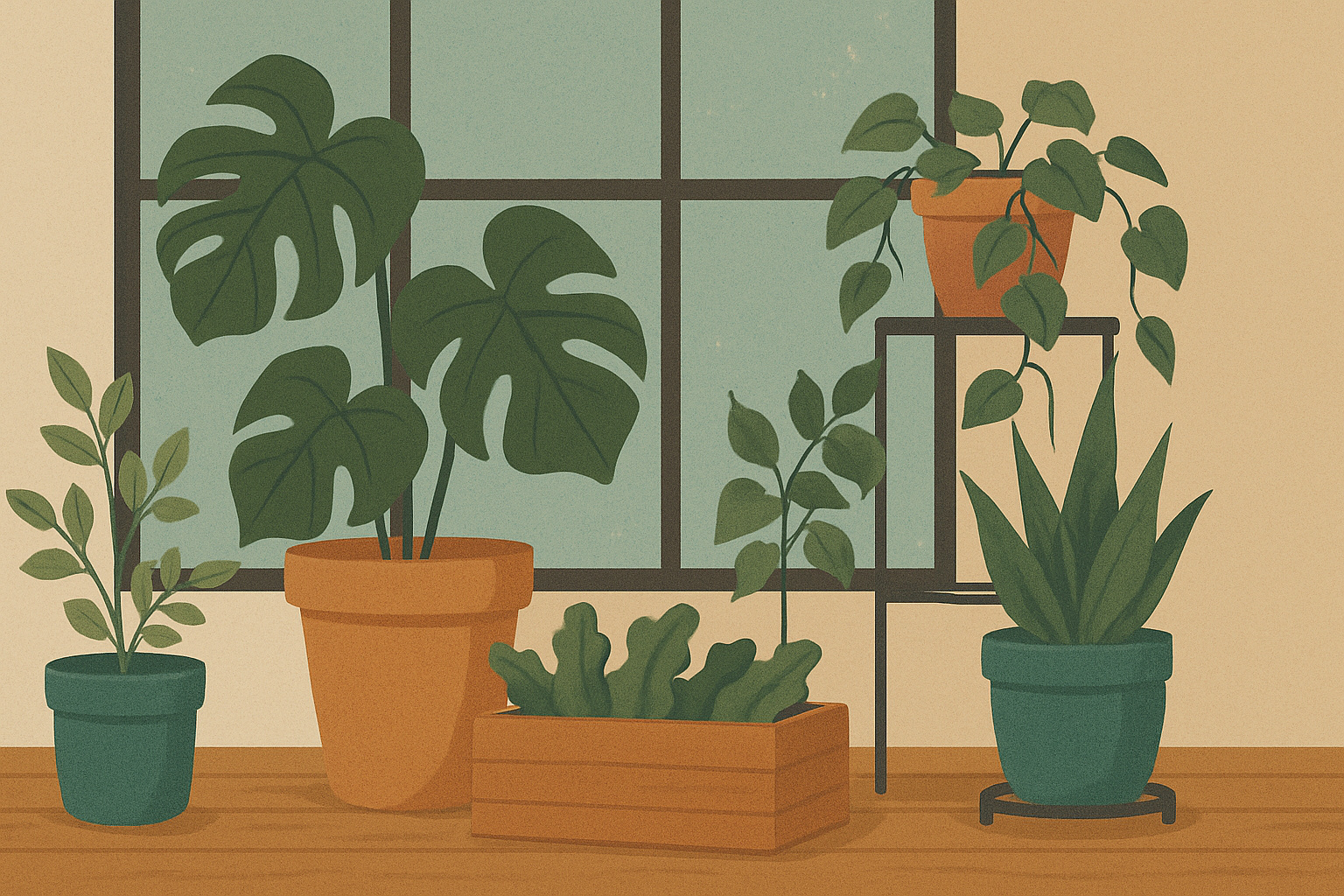
Transform Your Space: Top 5 Indoor Gardening Trends for 2025
Home and Garden 🏡 2025-04-25 5 minutes to readAs we journey into 2025, indoor gardening continues to blossom as a popular trend, offering myriad benefits ranging from improved air quality to added aesthetic appeal. In light of climate change and sustainability concerns, indoor gardening not only caters to urban dwellers but also fulfills the growing demand for eco-friendly living. This guide delves into the top five indoor gardening trends projected to shape our living spaces in 2025, providing tips on selection and maintenance to help you transform your environment.
Choosing the Right Indoor Gardening Trend for Your Space
With numerous gardening options available, selecting the right trend can be overwhelming. Whether you're a novice with a budding interest or a seasoned gardener aiming to try something new, understanding your space and lifestyle is key.
Assessing Your Space
- Light Availability: Determine the amount of natural light your home receives and choose plants that suit low-light, medium-light, or high-light conditions.
- Space Constraints: Identify areas that can accommodate greenery. Vertical gardens or hanging plants are great for limited spaces.
- Climate Control: Consider your home's climate control (temperature and humidity) to ensure it aligns with the needs of your chosen plants.
Lifestyle Compatibility
- Time Commitment: Certain plants and designs require more attention. Choose low-maintenance varieties if you have a busy lifestyle.
- Interest Level: Align your choice with your gardening experience. Starter plants for beginners and rare, challenging plants for enthusiasts.
2025’s Top Indoor Gardening Trends
As the gardening world evolves, certain trends stand out for their innovative approaches and environmental benefits. Here's an overview of the top trends for 2025:
1. Biophilic Design
Biophilic design integrates nature with modern architecture, promoting green walls, open spaces, and natural materials. Its goal is to enhance human-nature interaction, optimizing mental health and productivity. An example is the use of living walls in office spaces.
2. Edible Indoor Gardens
Urban farming is making its way indoors with mini greenhouses and hydroponics systems, allowing urban dwellers to grow fresh produce. Consider herbs like basil and cilantro, which thrive indoors and contribute to sustainable living.
3. Sustainable Gardening Practices
Using recycled materials and sustainable methods, such as aquaponics and vermicomposting, this trend focuses on reducing environmental impact. An example is creating plant containers from repurposed wood.
4. Smart Gardening Technologies
Technology meets nature with smart gardening systems that automate watering and lighting. Devices like smart pots and humidity sensors cater to tech-savvy gardeners looking for convenience.
5. Minimalist Plant Decor
The minimalist trend prioritizes simplicity and functionality, utilizing easy-to-care-for plants like succulents and air plants in sleek, modern pots to complement minimalist interior aesthetics.
Maintenance and Ownership Costs
Owning an indoor garden implies certain responsibilities and costs. These include initial setup, ongoing maintenance, and occasional upgrades or replacements.
Initial Setup Costs
- Plants and Supplies: Depending on your chosen trend, initial investments can range from inexpensive houseplants to costly hydroponic systems.
- Tools and Equipment: Pots, soil, fertilizers, and gardening tools must be factored into your budget.
Ongoing Maintenance
- Water and Nutrition: Regular watering and fertilizing are part of plant care. Some plants may require more delicate attention.
- Pest and Disease Control: Regular inspection for any signs of infestation or disease is necessary to maintain plant health.
- Trimming and Pruning: To keep plants vibrant, periodic trimming might be required.
Smart Technology Investments
- For those adopting smart gardening, technology-linked costs such as app subscriptions and device maintenance will be part of the budget.
In 2025, indoor gardening remains a compelling option for enhancing both interior spaces and personal well-being. By understanding your space's limitations and your lifestyle needs, you can select from trends like biophilic design, edible gardens, and sustainable practices, among others. While initial setup and maintenance costs should be considered, the benefits of improved air quality, sustainability, and mental well-being justify the investment. Embrace these trends to transform your living space into a lush, harmonious haven.
